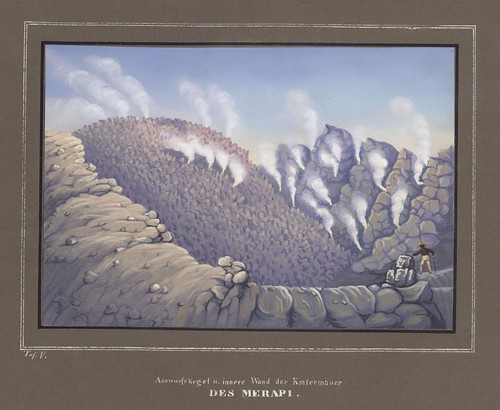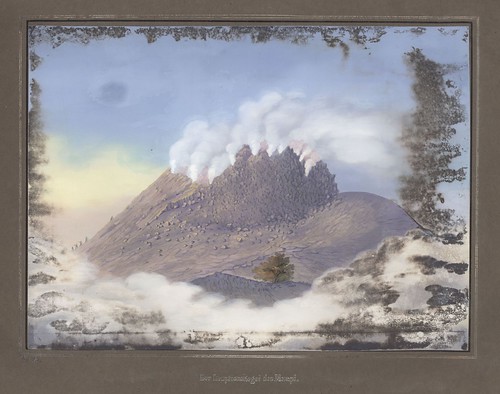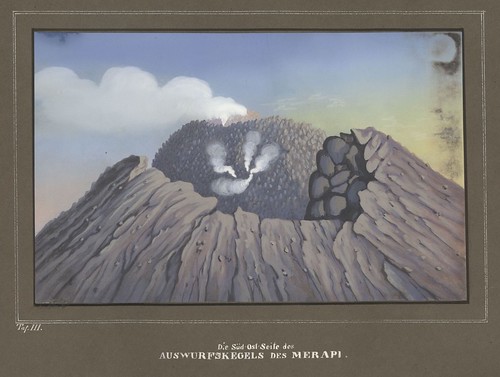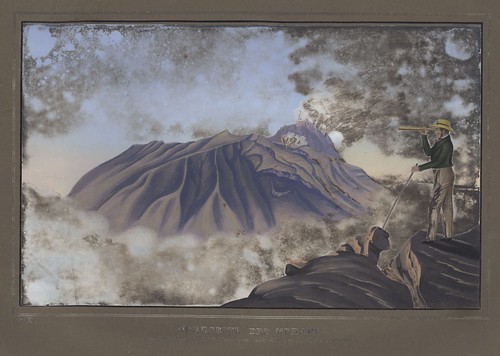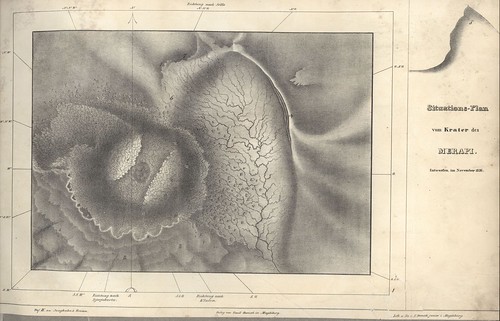


These three hand-painted woodblock prints come from a 5-volume anatomical work from 1813 called 'Kaitai Hatsumou' by Mitsutane.
The knowledge of anatomy had been given a huge boost in 1774 when the first western anatomy book was translated into Japanese. There followed a slew of publications that attempted to reconcile many of the beliefs about traditional medicine (eg. acupuncture) with the modern scientific methods. Mitsutane's work falls into this category (as best I can tell).
{The colour blue for the lungs was an interesting editorial/design decision!}
'Kaitai Hatsumou' is among the Tohoku University Medical Library Rare Books Collection which also includes that original translated 1774 work ('Kaitai Shinso').
[not to be confused with the medical science books from the Precious Books Exhibition Room at Tohoku University Library - see MA/PT]
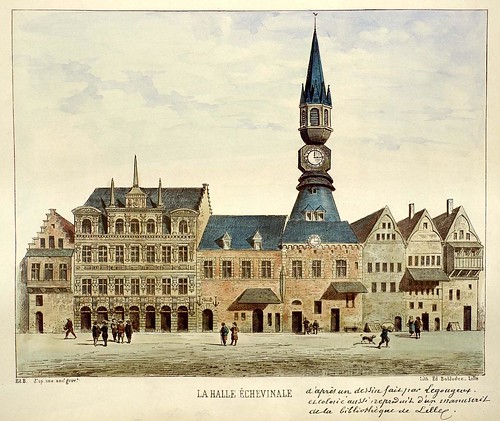
I think the cover is the best feature of this album of forty eight lithographs from 1893 of buildings and scenes from Lille. 'Album souvenir : Lille Ancien Monumental' by Edouard Boldoduc is available from la Bibliothèque Numérique de la Bibliothèque Municipale de Lille (the images above were extracted from pdf files but you can see all the plates as modestly sized jpeg images) I haven't looked through the entire site yet.
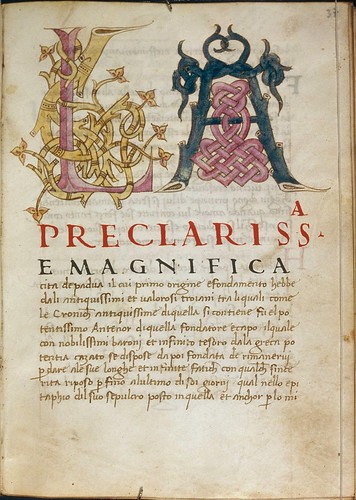

These three images are from the second half of the 15th century. The first two images of decorative initials are from Houghton MS Typ 024 and the dragon/snake/griffin/rooster image is from Houghton MS Typ 157 [Houghton being the library name at Harvard University]. Both manuscripts are by the hand of the scribe/calligrapher and alchemical sonnet composer*, Felice Feliciano. *{That's going in my c.v. tout de suite}
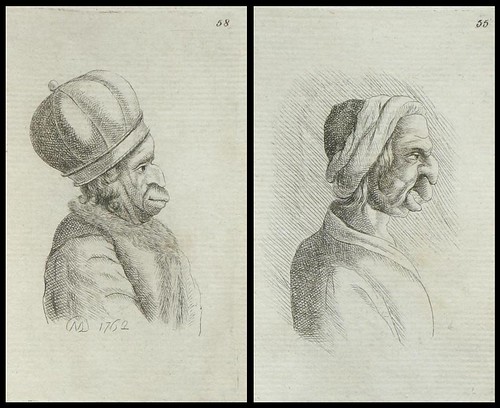
'A Book of Caricaturas : on 59 Copper Plates, with ye Principles of Designing in that Droll & Pleasing Manner' by Mary Darly (~1762) holds the distinction of being the first book devoted to caricatures to be published in the UK. The Ebay (completed) sale site would have us believe it's the only copy anywhere. I'm not sure about this but I didn't search very hard. Worldcat have a couple of citings with '60' instead of '59' in the title. There are about twenty five or so illustrations available which, in the ordinary course of circumstances, I think I would probably pass by had it not been for its publishing history. [Also: 'A History Of Caricature' 1926 by Bohun Lynch at the Internet Archive AND, very tangentially, Arthur Szyk's Berlin caricature exhibition]
deev (username) recently posted two webpages of images - including the above Lenin drawings - taken from a trio of anonymous 1970s Kiev sketch/cartoon albums to the Art_Links LJ community. Although it helps to know Russian, there's some obvious subversive political and social commentary among these illustrations: Page One and Page Two. [via]
'Historia Testudinum : Iconibus Illustrata' by Johann Schoepff', 1792 has about twenty or so plates of turtles seen towards the end of this page of thumbnails at Humboldt University.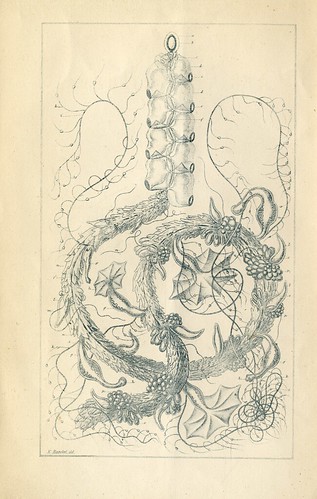
This illustration of microflora by the great Ernst Haeckel* is by far the best plate from his published 1868 lecture, 'Ueber Arbeitstheilung in Natur- und Menschenleben' at the Edoc server at Humboldt University.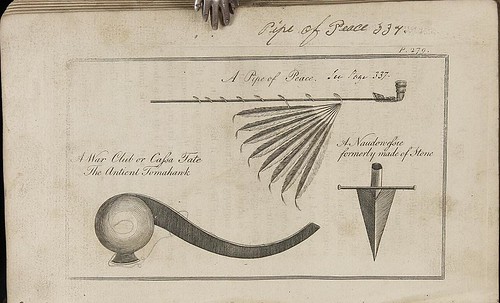
'Travels through the Interior Parts of North-America, in the Years 1766, 1767, and 1768' by Jonathan Carver, 1778.
We are told: "Account of exploration into the interior of North America by an Englishman seeking a transcontinental waterway. Carver penetrated farther to the west that any English explorer before the Revolution. Notwithstanding the lack of substantial contributions to geographic knowledge, Howes notes that "his book...stimulated curiosity concerning routes to the Pacific, later satisfied by Mackenzie and Lewis and Clark." The remaining plate is Indian artifacts including a peace pipe." [PBAGalleries]
'London's Dreadful Visitations Or a Collection of All the Bills of Mortality For This Present Year: Beginning the 27th of December 1664 and Ending the 19th December Following' was a publication that recorded the statistics with respect to deaths in London. At the end of the year 70,000 people were adjudged to have died from the plague out of 90,000 deaths.
"week one lists 7 fatal cases of Rickets, 8 stillborn bearths, 17 succumbing to death caused by 'Teeth', 1 victim of Thrush, 15 killed by Dropsie, 64 by Consumption, 1 executed, 29 afflicted by fever, 25 by the Flox and small pox, 2 died of apoplexie, 1 of Canker, 3 died of stopping of the stomach, 23 of simple old age"This memento mori titlepage appears within another book, 'The Travels and Memoirs of Sir John Reresby', published in 1813 [PBAGalleries]

These are the inside front and back cover pages from 'Wrigley's "Mother Goose": Introducing the Sprightly Spearmen, 1915' from the Szathmary Recipe Pamphlet Digital Collection at the University of Iowa.
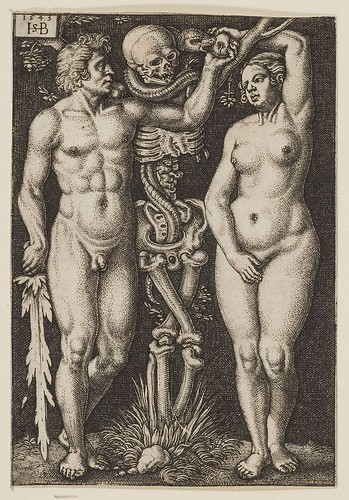
'Adam and Eve' by Hans Sebald Beham and Barthel Beham, 1543 at the Virtuelle Kupferstichkabinett.
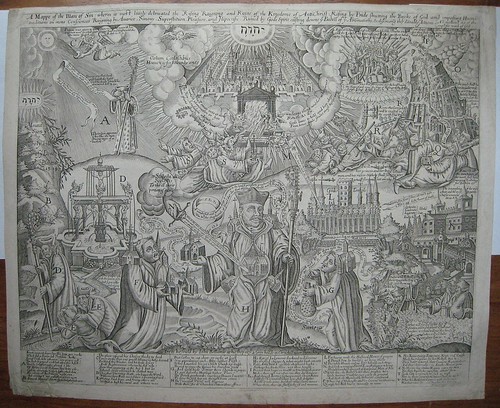
This complex 1622 broadside engraving (during the Reformation) that casts the Pope as the anti-Christ was the subject of a very detailed analysis last month on the British Printed Images to 1700 website. The only copy of this print is owned by Princeton University, as noted recently on their Rare Books blog.
Transcription of the full title:
"A Mappe of the Man of Sin: wherin is most lively delineated the Rising Raigning and Ruine of the Kingdome of Antichrist: Rising by Pride shutting the Booke of God and imposing Huma[n]e traditions on mens Consciences Raigning by Avarice, Simony, Superstition, Pleasure, and Hipocrisie. Ruined by Gods Spirit casting downe the Babell of their Abo[m]inations, & discoveri[n]g their da[m]nable Actions. All gathered out of the expresse word of God."
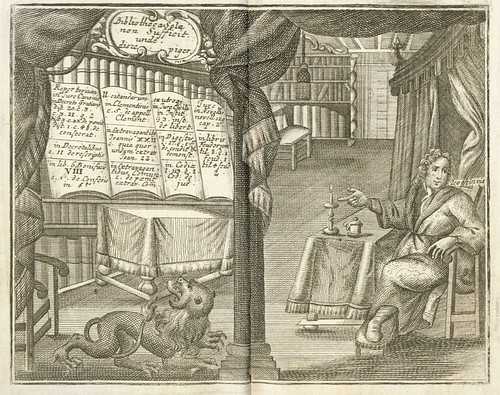
Frontispiece from 'Album Juridicum' by Johann Werle, 1733.
"Werle's dictionary of legal maxims derived from canon and Roman law speaks to the Enlightenment-era's fondness for classification and taxonomy. [..] This must have been a useful tool for lawyers who needed to appear learned."[cite]
The image comes from Yale Law Library's Rare Books Blog where Mike Widener tells us:
"At the top of the diagram is the Latin maxim, "Bibliotheca sola non sufficit; unde disce piger", which, roughly translated, means "A library alone is not enough; learn, you lazy man!" Words to live by."



The Concours Ballons 1784 set on flickr from hulk4598 is, I am told, a contemporary manuscript of miscellaneous airship/dirigible/hot air balloon designs held by the Archives Municipales de Lyon*, France. Thanks Stéphane!
Other things...
- Vale nonist.
- Mirror of the World - Reflections on a World of Books & Ideas exhibition site at the State Library of Victoria.
- A Unified Field Theory of Publishing in the Networked Era [via]
- Saskatchewan Council for Archives and Archivists Virtual Exhibits and Digital Projects.
- Digital Library of the Caribbean.
- Virtual Museum of Surveying [via]

